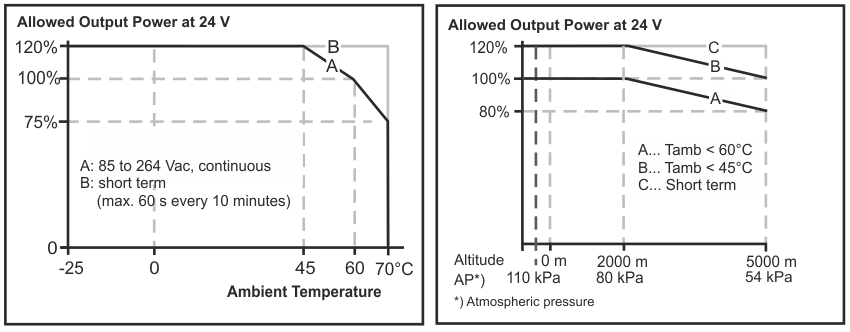Environment
Environment | ||
|---|---|---|
Operating temperature 1) | -25°C...+70°C | Reduction of the output power according to Fig. Output power vs. ambient temperature |
Storage temperature | -40°C...+85°C | For storage and transport |
Output load reduction | 12.5 W / K | +60°C...+70°C |
The derating is not hardware-controlled. The user must take care by himself to stay below the de-rated current limits in order not to overload the unit. | ||
Humidity | 5 to 95% r.h. | According to IEC 60068-2-30 |
Atmospheric pressure | 110 – 54 kPa | For details, see figure Output power vs. Altitude |
Installation altitude | up to 5000 m | For details, see figure Output power vs. Altitude |
Overvoltage category | II | According to IEC 60664 -1, |
Surge voltage strength | 4 kV (according to overvoltage category III) | Input to PE |
Degree of pollution | 2 | According to IEC 60664-1, not conductive |
Oscillation, sinusoidal 2) | 2 - 17.8 Hz: ±1.6 mm; | According to IEC 60068-2-6 |
Bumps 2) | 30 g 6 ms, 20 g 11 ms | According to IEC 60068-2-27 |
1) The operating temperature is the same as the ambient or surrounding temperature and is defined as the air temperature 2 cm below the unit. 2) Tested in combination with DIN rails according to EN 60715 with a height of 15 mm and a thickness of 1.3 mm and standard installation position. | ||
 Fig.14: Output power vs. ambient temperature; Output power vs. Altitude
Fig.14: Output power vs. ambient temperature; Output power vs. Altitude